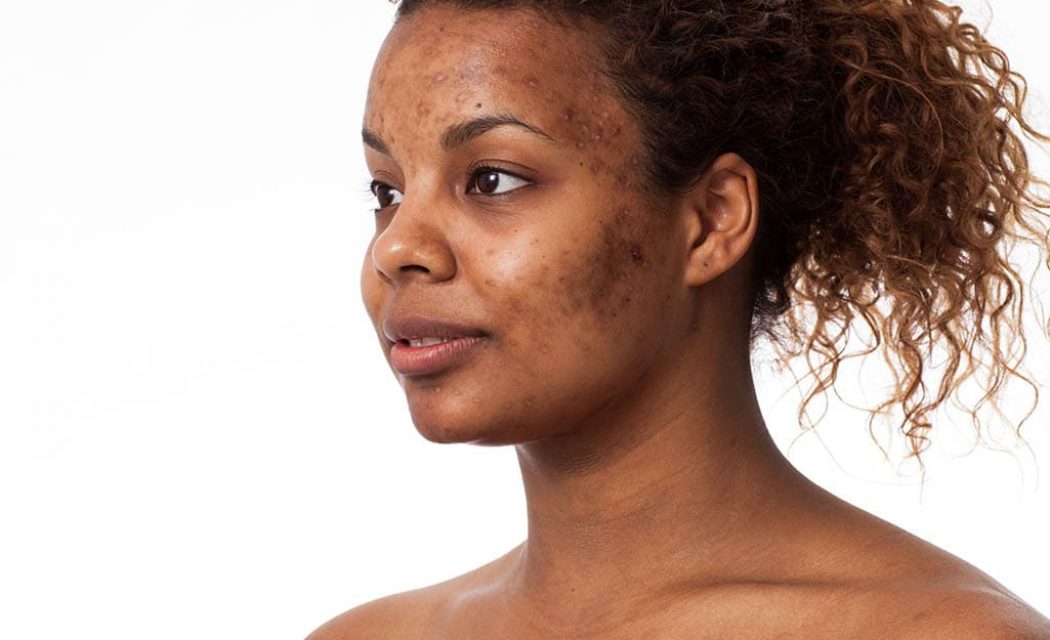Acne breakouts can be a source of frustration and embarrassment. What’s worse, serious acne can leave behind deep scars on the face and body, a constant and painful reminder of this chronic condition.
Acne scars happen when pores clogged with sebum, bacteria and dead skin cells become inflamed and swollen. If the inflammation is severe enough, it can cause the follicle wall to rupture and injure the surrounding skin.
Superficial injuries normally heal without leaving any marks. More profound skin trauma, however, can create deeper lesions in the underlying tissue. As the body kicks into rapid repair mode, not enough or too much collagen can be produced in the skin.
As many acne sufferers can attest, the ‘patched up’ skin is never as smooth as the original. The good news is that even the deepest acne scars don’t have to permanent. In fact, there are a number of highly effective medical treatments that can ameliorate acne scars and restore your skin’s appearance.
The first step in resolving your acne scars and regaining your confidence is to book a consultation with one of our experienced acne scar specialists here at Alinea Medical.
How to Prevent Deep Acne Scars Before they Happen
Prevention is the best medicine. The best way to avoid getting deep acne scars is to manage chronic cystic acne. Whether you are prone to cystic nodules, or it’s something that’s new to you, see a doctor right away at the first sign of a breakout. This will help prevent the spread of bacteria and accompanying swelling and inflammation – the leading cause of acne scars. Other important tips: never squeeze your pimples or pick at scabs.
Your physician may recommend a number of strategies to deal with your cystic acne, including light therapies, skin peels, medicated skincare products, and in some cases oral medication and dietary modifications. You’ll have to be patient because resolving chronic acne doesn’t happen overnight, sometimes requiring several months or longer.
Know What Kind of Acne Scars You Have
Arm yourself with knowledge. Some acne scar treatments are better suited for resolving deeper scar issues than others. To receive a proper diagnosed and recommendation for the optimal treatment for you, book a free one on consultation with a doctor specializing in acne scars. Here’s a list of different types of acne scars:
Atrophic scars. These are depressed or recessed scars that are situation below the skin’s surface. They’re formed when insufficient collagen if formed during the skin’s vital repair process. There are three main types of atrophic scars:
- Boxcar – The most common type of acne scar. They look like round or oval depressions (often described as “craters”) in the skin with sharp, uneven edges. Boxcar scars can be either deep or shallow, and the more superficial they are the better they respond to treatment.
- Ice pick – V-shaped scars that tend to be situated quite deep in the epidermis. They look like tiny holes or even chickenpox scars. They tend to be quite difficult to treat due to their depth and in most cases ongoing treatments are required to improve their appearance.
- Rolling – Wide depressions normally found on the cheeks, rolling scars typically have rounded edges with a “wavelike” appearance and tend to be shallower. These almost always associated with long-term inflammatory acne.
Hypertrophic (Raised Scars). Not to be confused with keloids, raised scars are most common on areas such as the back and chest. Unlike atrophic scars, these occur when too much collagen is produced in the skin during the repair process. Thick, raised, reddish in color, hypertrophic scars can create a lot of tension around a wound. They may last for years and sometimes medical assistance is necessary to remove them.
Choosing the Best Treatment for Your Deep Acne Scars
Chemical peels. These are pharmaceutical-grade acids that resurface the top layers of the epidermis. A series of chemical peels can improve shallow scars as well as post-inflammatory hyperpigmentation (more common in darker skin types) resulting from healed acne breakouts. Depending on the acids used and the strength of the peel, downtime (redness, peeling) may last anywhere from 1-7 days. This type of treatment is ideal for:
- Rolling scars
- Boxcar scars
- Post-inflammatory hyperpigmentation
Microneedling (with Platelet-Rich-Plasma (PRP). This treatment involves using an automated device to deploy microscopic needles into the epidermis. The goal is to trigger a healing response in the skin for the purpose of collagen formation. As new, healthy skin cells and collagen are produced, shallow acne scars can be considerably improved.
PRP facials in NYC can be performed alongside Microneedling to stimulate fibroblasts and boost the healing of acne scars. PRP involves drawing a small amount of your own blood, isolating the blood plasma in a centrifuge, then re-introducing the plasma back into the skin immediately after Microneedling.
Multiple sessions of Microneedling and PRP, spaced a month apart, are often required to achieve satisfactory results. Downtime is normally approximately 48 hours and some redness and peeling is normal.
This type of treatment is ideal for:
- Rolling scars
- Boxcar scars
- Post-inflammatory hyperpigmentation
Laser. Skin resurfacing devices such as FRAX Laser with SWT® IPL use light energy to precisely remove the top layers of skin. The goal is to smooth shallow and moderate-depth scars by replacing damaged tissue with healthy, new cells. Downtime such as redness and peeling can vary anywhere from 2-7 days based on the laser settings. For deeper scars, several sessions may be necessary. Laser treatment may not be suitable for darker skin types due to increased risk of hyperpigmentation.
This type of treatment is ideal for:
- Rolling scars
- Boxcar scars
- Ice-pick scars
- Raised scars – laser can smooth the appearance of hypertrophic scars but may not remove them completely.
Dermal Fillers. Soft-tissue fillers treat depressed acne scars by raising the indentations in the skin. Hyaluronic acid fillers are the most popular for this purpose because they are extremely safe and effective. The biggest drawback of dermal fillers is that they are quickly absorbed by the skin, requiring maintenance treatments every couple of months. A big plus with dermal filler is there’s no downtime and improvement is visible immediately.
This type of treatment is ideal for:
- Rolling scars
- Boxcar scars (in some cases)
Subcision. This lesser known outpatient surgical procedure is used to correct depressed acne scars. A special hypodermic needle is inserted beneath the scar to release the fibrotic scar tissue that’s pulling on the skin. As the fibrotic strands are released, new collagen fibers create a smoother appearance in the treatment area. Normally 1-3 subcision treatments are necessary to achieve satisfactory results, although it may not be possible to eliminate the scars completely.
- Rolling scars
- Ice-pick scars
- Boxcar scars
Dr. Ammar Mahmoud is a NYC physician specializing in regenerative cosmetic procedures. To treat your acne scars, Dr. Mahmoud may recommend any number of the above procedures to give you the best results possible. The best way to know which treatments can help you achieve your skin-smoothing objectives is to schedule your no-obligation consultation at Alinea Medical clinic.




